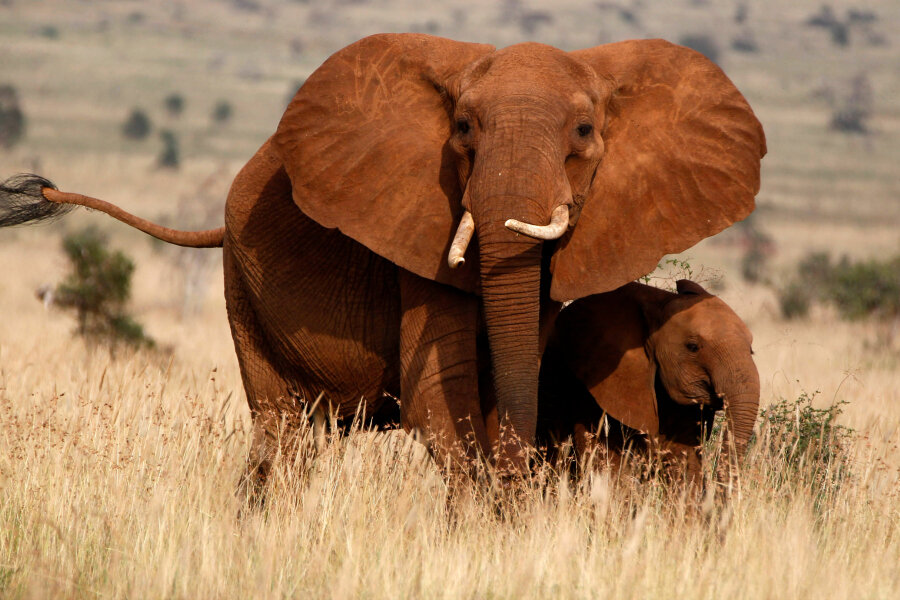Kenyan teenager's simple device could stop elephant poaching
Loading...
When Mercy Sigey was three years old her parents would take her to safari reserves in her native Kenya. Sigey, now 19, told the crowd at the United Nations Social Good Summit on Monday [Sept. 22] about her plan to fight poaching in Kenya’s animal reserves and around the world.
In May, a poacher’s poison arrow killed Satao, an elephant who was more than 45 years old. More than 20,000 African elephants were killed last year for their tusks. Satao's tucks weighed at least 100 pounds, and when poachers killed him they cut them out of his head and left his body on the ground.
Moved by Satao’s death, Sigey developed a device that notifies park officials when poachers cross into the reserves.
Along with her classmates, Sigey built a simple sensor that can detect movement in a nine-meter [30 ft.] radius. The students received support from the Innovate Kenya program, which is part of Global Minimum, a nonprofit that focuses on youth education and helps students in Africa solve problems in their communities.
By placing Arduinos — small, open-source hardware boards that act as environmental sensors — throughout the park, the group would be able to notify park officials of the presence of poachers and wildfires.
“I’m sure all of you here sitting in this hall would want to see an elephant standing magnificently and not lying down dead on the ground,” said Sigey, who was wearing a shirt decorated with zebras.
Mozambique Moves to Make Elephant Poachers an Endangered SpeciesThe World’s Forests Are Being Degraded at an Alarming Rate, and That’s Hurting Elephants, Tigers, and Bears
Why We Have to Save Wildlife to Save Ourselves
• TakePart staff writer Nicole Pasulka has written for Mother Jones, BuzzFeed, The Believer, and New York Observer. She lives in New York City.
• The original article appeared at TakePart, a leading source of socially relevant news, features, opinion, entertainment, and information – all focused on the issues that shape our lives.





